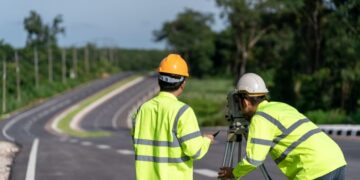OKLAHOMA CITY (OBV) – Gov. Kevin Stitt signed Senate Bill 621, giving final authorization to the creation of an Oklahoma Workforce Commission, which will work to streamline and revitalize Oklahoma’s workforce system.
Stitt signed the bill Wednesday, nearly two weeks after it fully passed both chambers of the Oklahoma State Legislature.
SB 621, written by Sen. Adam Pugh, R-Edmond, and Sen. Brian Hill, R-Mustang, establishes the Oklahoma Workforce Commission.
“This is a big win for Oklahoma’s children, families and businesses,” Hill said. “Workforce affects each of our lives daily and this is a move in the right direction towards solving workforce gap issues across Oklahoma. Together we can build a stronger future for our great state. Together we will.”
The Oklahoma Workforce Commission will direct the state’s workforce development strategy and administer and oversee funding allocated by the legislature for workforce development initiatives. The commission can contract with outside parties to achieve its goals.
“How can we ensure across the entire enterprise of systems and agencies, and individuals and entities that build our workforce, how can we ensure we are creating men and women with the skillsets that they need – whether it be aerospace, engineering, biomanufacturing, agribusiness, healthcare, whatever jobs may exist for my five year old in 2040 that don’t even exist today – and who will be in charge of that?” Pugh said in February. “Senate Bill 621 seeks to provide that answer. And it will work with business leaders in the private sector, with education leaders and with government leaders to ensure that [state government leaders] are not the ones growing the economy, that we’re giving you all the tools you need to grow the economy.”

Pugh filed SB 621 in January soon after Stitt issued Executive Order 2023-02 to streamline and refocus the state’s workforce management process. The executive order calls for the creation of a Workforce Transformation Task Force. The task force was co-chaired by Chad Mariska, Oklahoma Secretary of Commerce and Workforce Development, and Chad Warmington, president and CEO of The State Chamber of Oklahoma, and composed of private sector leaders and public officials. The task force identified how funding could be aligned with workforce goals and economic needs and implemented a comprehensive strategy that will change workforce for the better.
The Task Force determined that Oklahoma needs a “single owner” of workforce development that serves as a statewide coordinating body for agencies and stakeholders involved in workforce and talent development.

Warmington praised the legislature’s passage of SB 621.
“This is a huge step forward for Oklahoma,” Warmington said. “Workforce is the number one concern of businesses in our state. SB621 makes transformational changes to workforce development that will benefit Oklahoma companies and families. We are excited for the future growth and prosperity this will bring to our state.”
The Commission is envisioned as being composed of nine members, each a representative from Oklahoma’s private business sector, with the governor appointing three members, the House speaker appointing three members and the Senate pro tem appointing three members. The bill has a five-year cooling off period for former state employees to be appointed to the Commission, since appointees were to be from the private sector.
The Oklahoma Senate and Oklahoma House of Representatives first passed the bill in April, but it was sent to conference committee with its title stricken after a series of questions on the House of Representatives floor on April 26.
“The purpose of this bill and all the work that has gone into this bill for months and months is to ensure that we have an entity that gets up in the morning and actually makes sure that we’re listening to industry and actually producing the workforce of tomorrow, and then coordinating with those agency providers out there that actually do the work,” Hill said on the House floor in April. “That’s the purpose of this legislation and I hope to see it actually get somewhere.”
The bill returned to the Senate on May 24. The Senate passed the bill with a 34-10 vote on May 24.

The House initially rejected the bill, voting it down with a 41-54 vote on May 25. Upon it being voted down, Hill requested to “capture the vote,” which made it possible for the bill to be reheard before the legislative session’s conclusion on May 26.
The bill returned to the House floor on May 26, and representatives voted to rehear the legislation. The bill was approved by the House, but its emergency status was not.
Hill presented and defended the bill in the House, stating it was the action needed to produce a new, vigorous workforce management system that would evolve and continuously work to meet the state’s workforce needs.
“The role [of the Workforce Commission] is not to create, the role is to identify the need, connect it with the providers and identify the funding sources to us so we can more strategically spend dollars for the betterment of our Oklahoma kids and our communities and jobs,” Hill said.
SB 621 was amended during its time in conference committee, allowing for officials from relevant state and local agencies, departments, educational institutions, boards and commissions – like the Oklahoma Employment Security Commission, Department of Rehabilitative Services, Department of Corrections, Department of Education, State Regents for Higher Education, Department of Career and Technology Education, Department of Commerce, Oklahoma Office of Workforce Development, Department of Human Services and Department of Labor – to participate in the Commission’s process in an advisory capacity.
The change was added to ensure that state and local experts administering and running the state’s workforce development programs have a seat at the table with the Oklahoma Workforce Commission as strategic goals are identified and implemented to grow the state’s workforce. The Commission will retain ultimate control and decision-making authority, but advisory committee members will be actively engaged in the process. State officials in advisory roles will be non-voting commission participants since the entities they represent will have opportunities to be awarded funds from the Workforce Commission.

The conference committee reduced the cooling off period for former state employees to be appointed to the Commission from five years to one year.
The committee also gave appointing authorities – the House, Senate and governor – the ability to remove their own appointees and reappoint appointees to additional terms. Commissioners have no term limits. Stitt was given power to select the Commission’s chair.
The conference committee added reporting requirements and a public data dashboard on workforce efforts to the Commission’s responsibilities. The reports and public dashboard will provide elected officials, state entities and the public access to data impacting the state’s ability to meet workforce demands through current programming. The change added a level of transparency that was expected from the Commission, but not specifically addressed in the original version of the bill. The Commission is also required to make recommendations to the legislature to improve workforce development programs in the state.
The committee also tasked the Commission with administering the Workforce Coordination Revolving Fund, which was appropriated $5 million to coordinate workforce development activities.
Sections from the original bill were removed by the conference committee, including one that created a new revolving fund and another that enabled the Commission to invest funds appropriated to the agency.

It’s essential that the commission be composed of members of the private sector who have business backgrounds, according to Oklahoma business leaders.
“It’s critical that this be run by the private sector so government doesn’t create jobs; the private sector creates jobs,” said Rick Nagel, a managing partner of Acorn Growth Companies, an Oklahoma City-based equity firm focused on aerospace, defense, intelligence and space investments. “So, in order for this to really work and be effective, you’re going to need private sector leaders engaged at the top that will form and be the volunteers on this commission to set the policy. Because no one’s going to be able to describe what’s needed other than the folks that are actually doing the hiring in our State Senate.”
Tim Pehrson, president and CEO of Integris Health, concurred that leading members of the state’s business community should comprise the Workforce Commission.
“The business leaders know the needs of the workforce of the future, and they’re the ones in a perfect position to be able to provide guidance and advice to what the workforce needs are for our community in our state,” Pehrson said. “And then we can have the providers come and actually provide those services based on the needs of the businesses.”
Hill previously said that Oklahoma CareerTech will be involved with the Oklahoma Workforce Commission since they will be helping with strategic solutions for growing the workforce.
“As someone who has toured half the campuses across the state, I’m very passionate about them,” Hill said. “I think their voice is in the part where the commission looks and hears from industry and what is actually needed by industry and then connects it to CareerTech higher ed and those providers.”
Oklahoma has a 3 percent unemployment rate; unemployment routinely stays below 4 percent, but thousands of jobs across Oklahoma remain open each month. Oklahoma’s labor participation rate – the percentage of working-age Oklahomans actively participating in the workforce – was at 61.1 percent in April, which ranks in the bottom half among states.

















